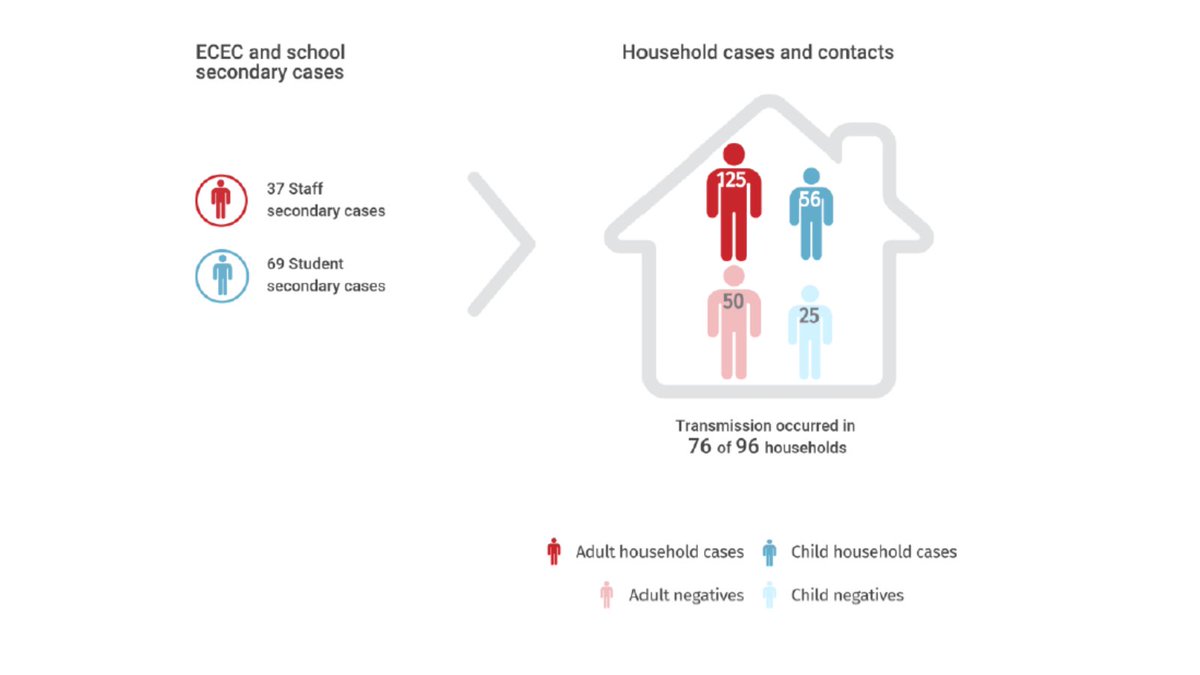
The worlds biggest study of post acute #COVID19 symptoms in children is out as a pre-print - the CLoCK study!
Fortunately results are very reassuring regarding symptom frequency and impact
Some important lessons, let's take a look 🧵
1/
bbc.co.uk/news/health-58…
Fortunately results are very reassuring regarding symptom frequency and impact
Some important lessons, let's take a look 🧵
1/
bbc.co.uk/news/health-58…
The study compared people who tested positive for SARS-CoV-2 to those who tested negative
They looked at symptoms at the time of testing, and then 3 months later
The differences are then presumably due to one group having covid
They surveyed children aged 11 - 17
2/
They looked at symptoms at the time of testing, and then 3 months later
The differences are then presumably due to one group having covid
They surveyed children aged 11 - 17
2/
What did they find?
At time of testing, 35% of test positives had symptoms compared to only 8% of test negatives
Astoundingly, 3 months later 67% of test positives had any symptoms, and *53% of test negatives* had symptoms
3/
At time of testing, 35% of test positives had symptoms compared to only 8% of test negatives
Astoundingly, 3 months later 67% of test positives had any symptoms, and *53% of test negatives* had symptoms
3/
This is why studies of persistent symptoms after covid which don't have a control group are almost completely useless
Over HALF of children who didn't have SARS-CoV-2 had symptoms 3 months later (despite only 8% having symptoms at baseline!)
These symptoms are SO common
4/
Over HALF of children who didn't have SARS-CoV-2 had symptoms 3 months later (despite only 8% having symptoms at baseline!)
These symptoms are SO common
4/
More symptoms were found in the positive group, which is what we would expect
These were most commonly tiredness, headaches, loss of smell, and shortness of breath
Test positives were more likely to have multiple (3+ symptoms) too (30% v 16%)
5/
These were most commonly tiredness, headaches, loss of smell, and shortness of breath
Test positives were more likely to have multiple (3+ symptoms) too (30% v 16%)
5/
Interestingly, there was almost no difference in any score on mental health, well being or quality of life assessments (including fatigue) for those who tested positive vs negative
There were small differences in problems with mobility and pain/discomfort
6/

There were small differences in problems with mobility and pain/discomfort
6/


As the paper notes, strikingly 40% of test positives and 39% of test negatives reported feeling "worried, sad or unhappy" on the QoL questionnaire
Whatever else is going on, our children and young people are not in a good place currently
7/
Whatever else is going on, our children and young people are not in a good place currently
7/
The team identified a cluster of children who had several symptoms ("class 2")
Risk factors for being in this cluster included testing positive for covid, being female, being older, and having worse pre-test physical and mental health
8/
Risk factors for being in this cluster included testing positive for covid, being female, being older, and having worse pre-test physical and mental health
8/

Some important biases:
Responder bias: 13% of people invited to the survey responded. Families with something to report are more likely to respond
Detection bias: only children who got tested enter the study, and we know many with covid don't get tested due to mild symptoms
9/
Responder bias: 13% of people invited to the survey responded. Families with something to report are more likely to respond
Detection bias: only children who got tested enter the study, and we know many with covid don't get tested due to mild symptoms
9/
These are important as the study will likely overestimate the proportion of children infected with covid who go on to have longer symptoms
Fortunately, it appears even for those who do, the impact on life is very limited for most, compared to children without covid
10/
Fortunately, it appears even for those who do, the impact on life is very limited for most, compared to children without covid
10/
We do know there are some children who do go on to have more debilitating symptoms after #COVID19, and they need support and help to recover
Fortunately, this appears rare
Most children recover quickly, and ongoing symptoms do not appear to significantly impair QoL
11/
Fortunately, this appears rare
Most children recover quickly, and ongoing symptoms do not appear to significantly impair QoL
11/
Hopefully we can move forward soon from putting all manner of symptoms into a single basket, and separate out distinct syndromes (post viral cough, anosmia, post viral fatigue, autoimmune etc) to give each of them specific focus
Link to study:
researchsquare.com/article/rs-798…
12/end
Link to study:
researchsquare.com/article/rs-798…
12/end
• • •
Missing some Tweet in this thread? You can try to
force a refresh









